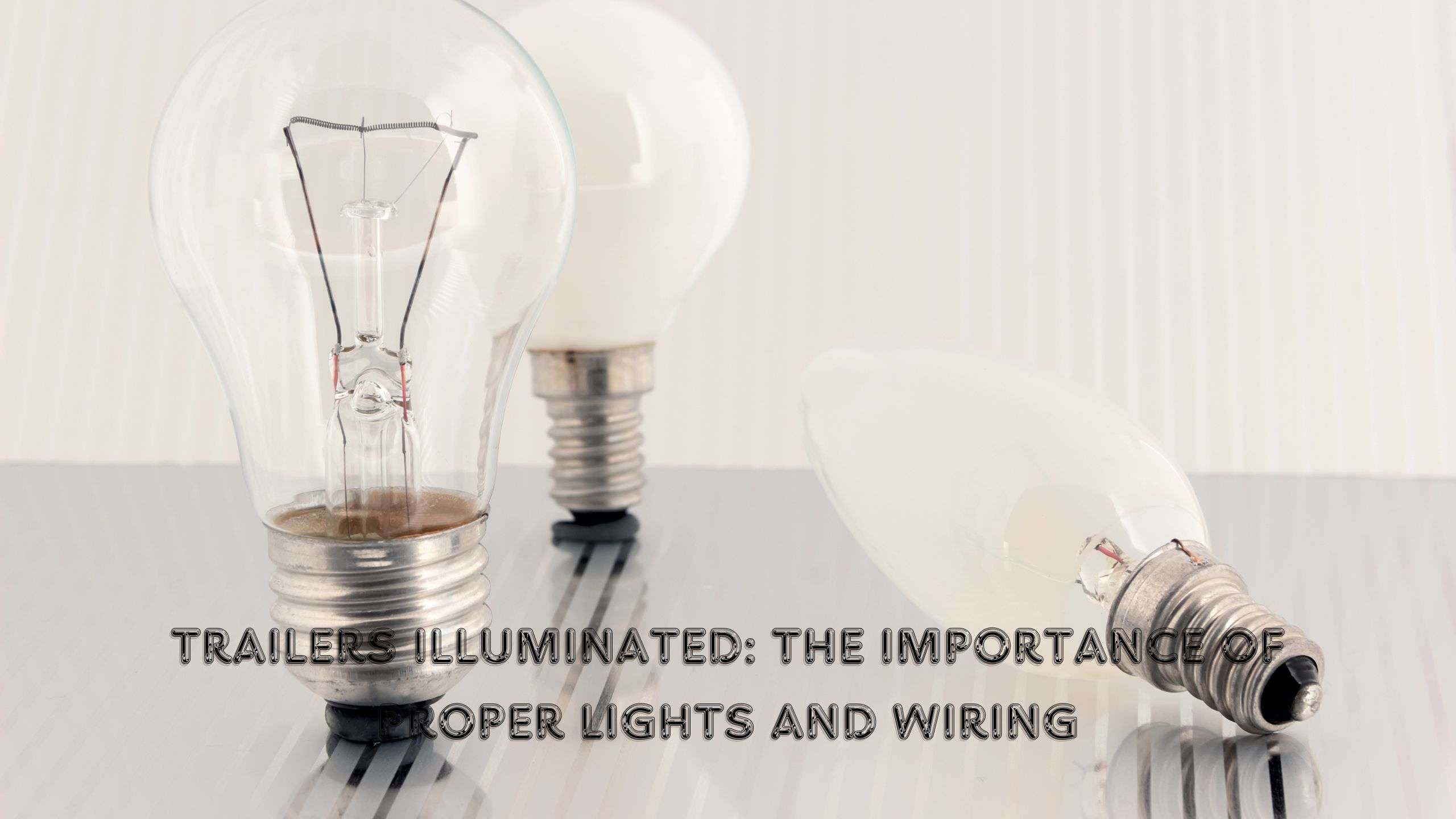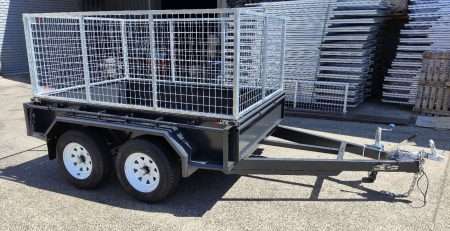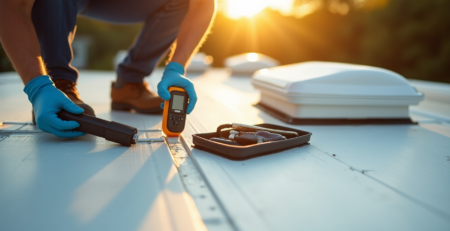
Trailers Illuminated: The Importance of Proper Lights and Wiring
Trailer Lighting Essentials
When it comes to trailer maintenance, the importance of proper lighting cannot be overstated. It is not only a legal requirement but also crucial for the safety of everyone on the road. In this section, we delve deeper into the world of trailer lights and wiring, exploring both their functionality and legal requirements.
Understanding trailer lighting
Trailer lights serve multiple purposes. They enhance visibility, increase safety, and communicate the driver’s intentions to other road users. Typically, they receive power from the tow vehicle’s electrical system via a direct connection or a separate battery (LCI Store).
The most common type of trailer connector is the 7-way RV Blade, which provides power for all functions of the trailer lights. Ensuring proper grounding of the trailer lights to the trailer frame is crucial to preventing electrical issues.
Trailer lights vary in type and function, including taillights, brake lights, turn signals, reflectors, and licence plate lights. Many trailers also include backup lights to assist with reversing. Depending on the cargo load, auxiliary lights may be required if the tail lights are obscured.
Legal Requirements for Trailer Lights
State laws and Department of Transportation guidelines govern trailer lighting regulations. While specific requirements may vary, there are general rules that apply in most cases.
For instance, in the United States, boat trailers are required to have functioning taillights, brake lights, turn signals, and reflectors that are visible from at least 500 feet. In Michigan, trailers over 2,500 pounds must follow similar requirements, with the lights needing to be visible from 500 feet away.
Trailers less than 30 inches wide are exempt from tail light requirements but must have a white light on the rear visible from at least 500 feet away. All trailers must have a licence plate light illuminating the licence plate, visible from at least 50 feet away.
Prior to each trip, it’s essential to test the trailer lights and wiring to ensure they are functioning properly and in compliance with safety regulations. Compliance not only helps you avoid fines and penalties but also contributes to road safety.
This first step in understanding trailer lights and wiring sets the stage for a more in-depth look at the types of lights, wiring basics, installation and testing, and maintenance and safety considerations, which we will cover in the subsequent sections of this guide.
Types of Trailer Lights
When it comes to finding the right lighting for your trailer, understanding the different types of lights available can make all the difference. Here we’ll delve into three main categories: incandescent vs. LED lights, waterproof and submersible lights, and solar-powered lights.
Incandescent vs. LED lights
Traditionally, incandescent lights have been the go-to choice for trailer lighting. However, with advancements in technology, LED lights are becoming increasingly popular due to their durability and energy efficiency (DHgate).
One of the key advantages of LED lights is their energy efficiency. They use less energy than incandescent lights, which can help conserve battery power and reduce fuel costs. This makes them a more sustainable option for long-term use. Additionally, LED lights have a longer lifespan, lasting up to 50,000 hours or more. They can also withstand harsh weather conditions without getting damaged, making them a reliable choice for trailer lights.
Despite these benefits, the choice between LED and incandescent lights ultimately depends on your specific needs and budget.
Waterproof and Submersible Lights
If your trailer is going to be exposed to water regularly, especially in the case of boat trailers, it’s crucial to consider waterproof and submersible lights. As their name suggests, these lights are waterproof and can withstand being completely submerged in water.
This ability to withstand water exposure makes them an ideal choice for boat trailers or any trailers that may need to ford rivers or endure heavy rain. Again, LED technology is often favoured in this category for its durability and bright illumination.
Solar-Powered Lights
Solar-powered trailer lights are a sustainable and cost-effective option for trailer lighting. These lights harness the power of the sun to illuminate your trailer, eliminating the need for a trailer battery (Four Winds Trailers).
During daylight hours, these lights charge using solar panels. Once charged, they can provide light for a significant period of time, depending on the model and the amount of sunlight received.
Solar-powered lights are not only great for the environment but they also save you from the hassle of replacing batteries or dealing with wiring. However, their effectiveness can be limited in areas with less sunlight or during shorter winter days.
In conclusion, when determining the type of trailer lights and wiring that’s best for your needs, consider factors such as your budget, the environment in which the trailer will be used, and the specific legal requirements in your area. Remember, safety should always be your top priority when choosing and installing trailer lights.
Trailer Wiring Basics
In this section, we delve into the essentials of trailer wiring, paying attention to grounding, connector types, and maintenance practices. These elements are crucial for the proper functioning and safety of your trailer lights and wiring.
Importance of Grounding
Grounding is a key aspect of trailer wiring. It involves connecting the white wire in the trailer’s wiring system to a grounded metal surface on the trailer. This connection ensures a solid electrical link between the trailer frame and the towing vehicle’s frame, preventing electrical shorts.
Trailer lights need to be properly grounded through the wiring of the trailer harness to ensure proper illumination when applied. The white wire plug should be correctly connected to the tongue of the trailer for grounding. Without proper grounding, trailer lights may not function correctly.
Trailer Connector Types
The connector is a crucial component of the trailer’s wiring system. It allows the trailer lights to be connected to the vehicle’s electrical system. The most common type of trailer connector is the 7-way RV Blade, which provides power for all functions of the trailer lights.
The wiring system of a trailer typically consists of a four-way flat connector or a seven-way blade connector, depending on the type of trailer. Each connector type is designed to provide a reliable connection and withstand the rigours of towing.
Wire Protection and Maintenance
Just as important as the lights themselves, the wiring for trailer lights should be protected with a flexible conduit or tubing to prevent damage from road debris or weather conditions.
Regular inspection and maintenance are also essential for keeping your trailer lights and wiring in top condition. This includes checking for loose connections, damaged wires, and burned-out bulbs. It’s also important to keep your lights clean, replace bulbs regularly, and store them properly when not in use (DHgate).
By understanding and implementing these basics of trailer wiring, you can ensure the reliable and safe operation of your trailer lights. Whether you’re towing for business or pleasure, remember that proper care and maintenance of your trailer’s lighting system is not just a good practice—it’s a legal requirement. For more information on other trailer components, check out our articles on trailer hitch locks, trailer brake controllers, and heavy-duty trailer hitches.
Installation and testing
Once you’ve selected the right trailer lights and wiring for your trailer, it’s time to install and test them. This process is crucial for ensuring the functionality of your trailer lights and compliance with legal requirements.
Installing wiring harness kits
The installation process typically involves a wiring harness kit, which includes the necessary wiring, connectors, and instructions for installation. The wiring system of a trailer usually consists of a four-way flat connector or a seven-way blade connector, depending on the type of trailer. This connector allows the trailer lights to be connected to the vehicle’s electrical system.
Installing a wiring harness kit begins with running the wires from the connector to each light fixture on the trailer. The white wire in the trailer’s wiring system should be connected to a grounded metal surface on the trailer for proper grounding (etrailer). It’s crucial to follow the instructions provided with the wiring harness kit to ensure correct installation.
Testing trailer lights
After installing the trailer lights, it’s essential to test them to ensure they’re functioning correctly. This can be done by connecting the trailer to the tow vehicle and activating the various lighting functions to check if they’re working correctly (LCI Store).
Testing should include checking:
- Taillights
- Brake lights
- Turn signals
- Reverse lights (if equipped)
- Marker lights
Common Troubleshooting Tips
Should you encounter any issues with the trailer lights, there are several troubleshooting measures you can undertake. These include checking the wiring connections, inspecting the bulbs for damage or burnout, and ensuring proper grounding of the lights.
Issues with trailer lights can often be traced back to a few common problems:
- Loose or damaged wiring connections
- Burnt-out or damaged light bulbs
- Poor grounding
- Incorrect wiring
Addressing these issues promptly can help ensure the ongoing functionality of your trailer lights and prevent potential safety issues on the road.
Maintaining the health of your trailer’s lights and wiring is a crucial aspect of owning and operating a trailer. Regular inspection, testing, and maintenance can help identify issues early and ensure your trailer remains safe and legal on the road. For more advice on trailer maintenance and safety, visit our guides on trailer wheel bearings and trailer backup cameras.
Maintenance and safety
Ensuring the safety of your trailers involves regular maintenance and selecting quality components. In this section, we will discuss how you can maintain your trailer lights and wiring, choose quality products, and consider safety tips.
Regular inspection and maintenance
Proper care and maintenance of trailer lights and wiring are crucial for ensuring their longevity and effectiveness. Regular inspection is a must to ensure they are functioning correctly and comply with legal requirements (PartsVu). This includes checking for loose connections, damaged wires, and burned-out bulbs.
Maintenance tasks should also include the following:
- Regular cleaning: Remove dust and dirt from lights and wiring to prevent corrosion and ensure clear visibility.
- Checking for damages: Inspect the lights and wiring for any visible damage. Replace any damaged components immediately.
- Storing properly when not in use: If the trailer is not being used for an extended period, ensure the lights and wiring are stored in a dry and clean environment to prevent damage.
Choosing Quality Trailer Lights
When it comes to choosing trailer lights, LED lights are a recommended choice. They are more durable, energy-efficient, and long-lasting compared to traditional incandescent lights, offering better visibility and less likelihood of burning out (etrailer).
Choosing quality brands is also key to ensuring the reliability of your trailer lights. Some of the top brands for trailer lights include Peterson Manufacturing, Optronics International, Grote Industries, Blazer International, and MaxxHaul. These brands are known for producing high-quality, reliable trailer lights that cater to various needs and preferences.
Safety Considerations and Tips
Safety should always be a priority when dealing with trailer lights and wiring. Here are some safety tips to keep in mind:
- Always check your trailer lights before hitting the road. Make sure all lights are functioning correctly to ensure your trailer is visible to other drivers.
- Use the correct type of wiring and connectors for your trailer lights. Incorrect or poor-quality wiring can lead to lighting failures.
- Regularly inspect your trailer for any wiring issues or damaged lights. Promptly address any issues to prevent accidents.
- Always use a trailer hitch lock and safety chains for added safety while towing your trailer.
By adhering to these maintenance and safety guidelines, you can ensure the reliability of your trailer lights and wiring, contributing to a safer driving experience. For more information on other trailer components, check out our guides on trailer brake controllers, trailer leaf springs, and heavy-duty trailer hitches.
Author
I am Rahatul Ashiq Tamal. Another author of Muscle Trailers. Muscle Trailers is a well-known trailer brand in Sydney, Melbourne & Adelaide

How to Mount a Spare Tire on Your Trailer: A Simple Step-by-Step Guide
Trailer service centers receive over 1 million phone calls and 1.3 million emails each year about trailer maintenance problems....

How to Fix RV Roof Leaks: Simple Roof Leak Detection Guide for Beginners
Did you know DIY RV roof repairs can cost under $50? But undetected leaks could lead to substantially higher repair...

Starting a Food Truck Business in Australia: From Trailer Selection to Launch
The Australian mobile food market has evolved into a billion-dollar industry. This makes a food truck...
